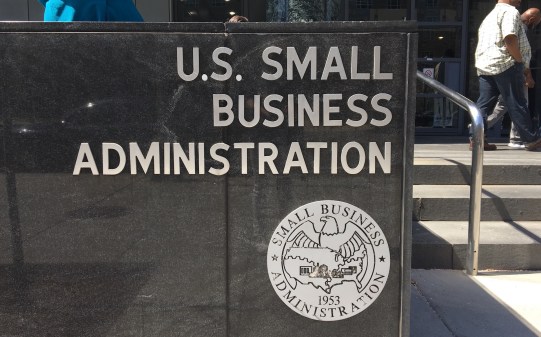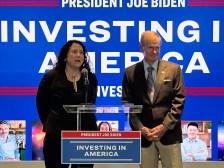What’s the biggest mistake most small businesses make when trying to break into government contracting, especially in the homeland security market? They don’t take the time to learn about and understand their potential customers and the multitude of contracting opportunities available to small businesses.
“They don’t necessarily understand the environment in which they are competing,” said Sharon Phillips, small business advocate at the Department of Homeland Security’s Office of Small & Disadvantaged Business Utilization. “It’s a totally different ballgame in government contracts.”
That was the main theme at the Homeland Security Small Business Outreach conference, hosted Jan. 14 by Reston, Va.-based WBB Inc. Despite the continued budget battles on Capitol Hill and the impact of sequestration, there is still a mountain of contracting dollars available to businesses of all sizes. But if you don’t understand who the users are, what their technology gaps are, whom you can team with or the various programs available to help your company further develop its innovations, you’re not likely to succeed in the highly complex and often frustrating world of federal contracting.
One of the most common mistakes small innovators make is trying to market their new products and services to DHS rather than to the individual component agencies.
“Do not try to market to DHS,” Phillips said. “We have eight buying activities or components. Find out which one is in the market for what you are developing and market to them through the small business specialists.”
“If you come to DHS and you’ve worked with one procurement shop [in the past], you’ve worked with one procurement shop,” said Mike Smith, director of the Strategic Sourcing Program Office at DHS. “There are different procurement shops. And no, we’re not the easiest group to sit down and talk to. But when you do get the opportunity, be familiar with the organization. Come in with some ideas for how DHS can further its mission and do more with less.”
Another common problem small businesses face is believing that as long as they develop an innovation, the government will come looking for it. And when they do become aware of an opportunity to pitch their technologies, they often complain they don’t have the time to respond to the government’s requests for information. Neither is true, according to senior acquisition officials at DHS.
“Please, please, please respond to our requests for information,” Smith said. “We use that information to plan our acquisitions.”
But don’t make the mistake of thinking that even if your initial interaction with DHS receives a positive response from the agency, a contract and revenue is right around the corner. The reality is quite different.
For example, “getting into [U.S. Customs and Border Protection] takes a year,” said Robert Lohfeld, Jr., founder and CEO of Sev1Tech. DHS contracting “is not a 90-day pop and win,” he said.
“Even after we win DHs contracts, it’s taken 52 to 120 days on average to get personnel cleared to start work,” said Robert Olsen, chief operating officer at WBB. And companies typically don’t see revenue for another 18 to 24 months, he said.
All is not lost
Frank Barros, program analyst for the Small Business Innovation Research program at the DHS Science and Technology Directorate, acknowledged that partnering with DHS “is not as simple as it sounds” but it is possible. And targeting the mandatory small business set-aside contracts under the SBIR program is one way to do that.
The DHS SBIR program is focused on near-term commercialization and delivery of operational prototypes to federal, state and local emergency responders and managers. Awards are made in three phases, with each placing limits on the amount of time and funding allowed for research. But it’s important to understand what research means in the context of the DHS SBIR program, Barros said.
“SBIR is not a research program,” Barros said. “Somebody out there wants it. We are not looking at basic R&D.” The timeframe is typically two or three years, he said, advising small businesses not to “guess” when it comes to explaining what stage of development their technology is in.
According to Barros, 16 percent of proposals that come in are accepted. As many as 37 percent of those move on to phase 2 and 21 percent of phase two program go on to the final phase. The goal is to help small businesses develop their innovations to the point where they can be taken to market and help solve a specific DHS technology gap.
But it’s a small program. The $20 million annual budget for the DHS SBIR program means the agency can help fund innovations from only 40 to 45 companies per year, Barros said.
One of the most beneficial programs for small business has been DHS’ strategic sourcing initiative. In fact, according to Smith, 35 percent of DHS’ acquisition dollars last year went to small businesses as prime contractors. And DHS is close to providing small business with some help finding opportunities.
There are more than 55 strategic sourcing vehicles available in eight different commodity families, Smith said, adding that the agency is “close to having a public facing website for our strategic sourcing initiatives that will look a lot like what we have behind the DHS firewall.”
DHS investment drivers
- National priorities
- Cost savings
- Tech infusion
- Operational excellence
- Stakeholder needs are not constant
DHS innovation focus areas
- Cybersecurity
- Mobile computing
- Cloud
- Big data
- Predictive analysis
- Biometrics
- Agile transformation
- Border security
- Real-time collaboration and info sharing
- Location-based solutions
- Workforce transformation
- Threat preparedness and response





